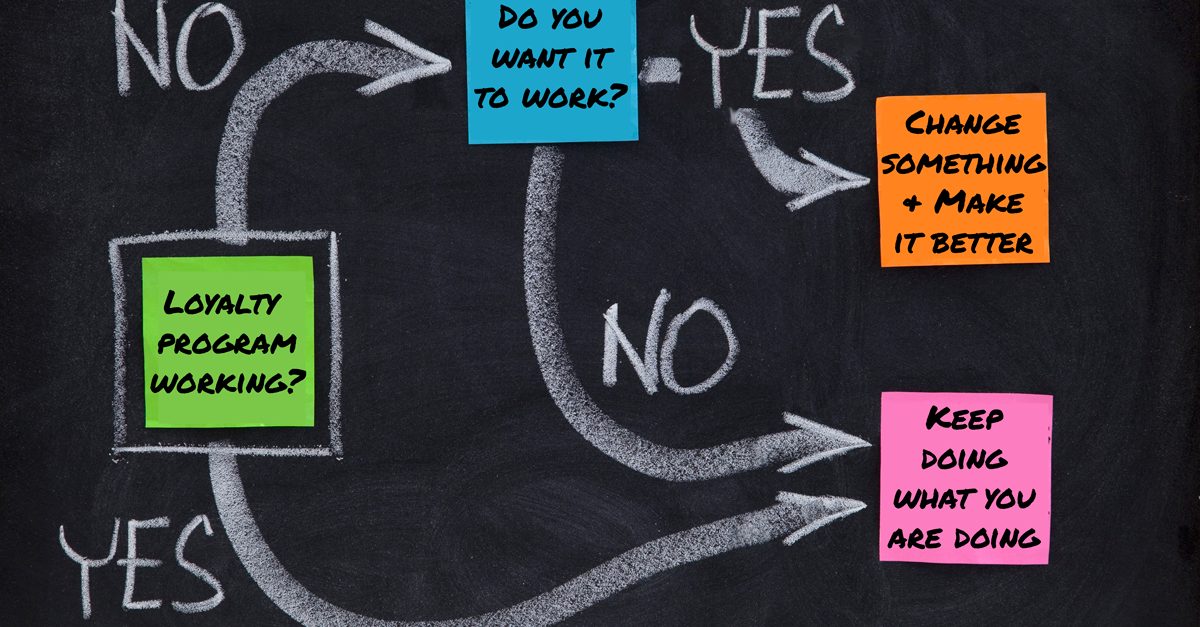One of the most prominent questions on every business owner’s mind is how to create a loyalty program that drives engagement and fuels customer satisfaction. After all, we’ve seen the amazing results these strategies can invite; brands from Starbucks to Amazon have experienced major success with inventive, valuable programs that truly speak to their customers’ needs, and many small businesses are only just beginning to understand the potential.
Think of this guide as your primer to the concept. Whether you’re reinventing an existing loyalty program that’s not working or looking to create something entirely new, these tips will help you dive head first into the loyalty game.
1. Know What Works
When it comes to creating a loyalty program, the first step is often the most daunting: understanding what your audience wants. If you have an existing program that isn’t quite the blockbuster you’d hoped it would be, consider using a survey to find out what your customers like, what they dislike and what they’d love to see added. This information will invaluable as you move forward, and it might just unlock a few ideas you hadn’t even considered.
Then, once you’ve solicited customer feedback, spend a little time examining the programs of successful brands. How have they structured the rewards? What does the collateral look like? Is there a mobile component? Regardless of your industry, Starbucks, Sephora, and DSW are great places to start; these brands offers some of the most popular loyalty programs currently on the market. You can even use credit cards as a basis for your inspiration. American Express features a fantastic point system, for instance, and Saks Fifth Avenue combines loyalty-like rewards with massive earning potential.
2. Set Your Goals
Not every program is designed to achieve the same results. Some exist primarily to lure new customers, some focus on increasing profits, and others aim to create a buzz-worthy moment that puts a brand in the public eye. Because these goals will ultimately dictate how the program works, it’s important to know what you’d like to get out of the experience.
Don’t worry: This doesn’t have to be complicated. It’s perfectly fine to launch a program that serves a basic function — garnering new sales, for instance, or satisfying existing customers — but you can’t drive down the loyalty road without a map. Using both your business data and customer feedback as a guide, highlight the primary thing you hope to achieve when your program hits the streets. Keep that goal top of mind throughout the entire process; if any element leads too far off the path, you’ll have the perfect map to help bring you back to center.
3. Get Structured
This is where the fun really begins. The structure of a loyalty program is crucial to its success, and the doors are wide open when it comes to choosing how to design yours. Once you’ve heard from your customers and selected your goal, create a plan of action for how the program will function, and use the following questions to help guide you through the brainstorming process.
Signing Up
- Can any customer opt in? (you should make this process as easy as possible, that’s why customers love Fivestars so much, all they need is their phone number to sign up to your loyalty program)
- Will there be a purchasing threshold? In other words, will a customer have to spend a certain dollar amount to be eligible?
- Will there be an annual fee? (I would stay away from this one, it’s just another barrier for customers to easily sign up)
Earning Potential
- Will the program use a point system? If so, how many dollars will equal one point? (Points are always the best practice. What sounds better? Earn 20 points to get 50% off! OR Spend $200 and get 50% off! One sounds a bit easier on the wallet even though it’s the same.)
- Is there a tiered structure for customers who spend more or less over the course of a year? For instance, will you offer increased earning potential to high spenders? (You definitely should! The customers who spend the most should be rewarded the most! They’ll love you for it and be loyal for life.)
- Will you offer a first-time discount or point bonus to entice new members? (This is also a must. If nothing else, give them a few extra points up front so they feel that they are closer to getting a reward and are more likely to come back sooner.)
Reward System
- Will the rewards be discounts or free items?
- How many points or purchases will it take to earn a reward?
- Will the rewards be tiered depending on how much a customer spends?
- Can a customer let points accrue for larger rewards later?
Extra Perks
- Will members have access to more benefits than rewards alone? Can you incorporate exclusive events or surprise gifts into the program?
- What opportunities can you create to entice members to spend more?
Here’s some inside advice: Spend a little extra time considering the last set of questions. Standard rewards are fantastic, but the best loyalty program ideas incorporate more than the promise of free stuff. Sephora, for instance, offers exclusive emails and birthday perks through its Beauty Insiders program. Amazon provides seemingly endless members-only benefits to customers who pay for Prime. Some brands even allow their members to shop sales before anyone else. It’s often the little things that matter most.
4. Consider the Collateral
Long gone are the days of the boring buy-ten-get-one punch cards. In an effort to create more value for customers, brands are getting creative with the physical collateral attached to their loyalty programs. This is especially important if you’re trying to entice new clients; encouraging an authentic wow moment is often as simple as creating an exclusive, must-have card. Starbucks, for instance, did this to great effect with their now-famous Gold Card. Not only did the tiered program offer personalized perks and free items, but it also came with a luxurious card that members loved to keep in their wallets. Having a Starbucks Gold Card quickly became a point of pride for both new and existing customers — which is exactly what you want.
Bear in mind, however, that not every program comes with a physical card. Both Sephora and Amazon run their systems completely online, and some brands use a digital version of a card to better serve mobile customers and save the cost of printing. The decision depends entirely on what you hope to achieve, what aligns with your brand identity and what your clients want, but the ultimate goal should be to make customers feel like part of an exclusive club.
5. Test the Concepts
Depending on who you ask, testing a loyalty program is either a nice-to-have element or a deal-breaking must. We think the decision can be made on a company-by-company basis. If you have the time and a sizable customer base, a small test can be invaluable. It’ll create a focus group of results that will help you understand what changes to make before the actual launch. Brands with an existing loyalty program should definitely go this route as well; even if the test includes every member of your current system, you’ll get some great insights before new customers begin to sign up.
If you’re a new business with a small base, however, it might make the most sense to launch the program and tweak as you go. Just be aware that you might need to change the program frequently if you run into loads of less-than-satisfied feedback, so factor any extra printing costs or additional fees into the equation when you go this route.
6. Play the Promo Game
The goals are set, the structure is created, and the collateral is ready to go. It’s just a matter of spreading the word. Go back to your structural questions to unearth a few promotional possibilities: Can you create a one-day-only discount for new members? Can the first few hundred customers receive a massive sign-up bonus? What about bonus perks for referrals or social-media opportunities? Anything you can do to create an interruptive moment will go a long way in terms of increasing awareness. After all, if you build it, they will come — but they have to know about it first.






Leave a Comment